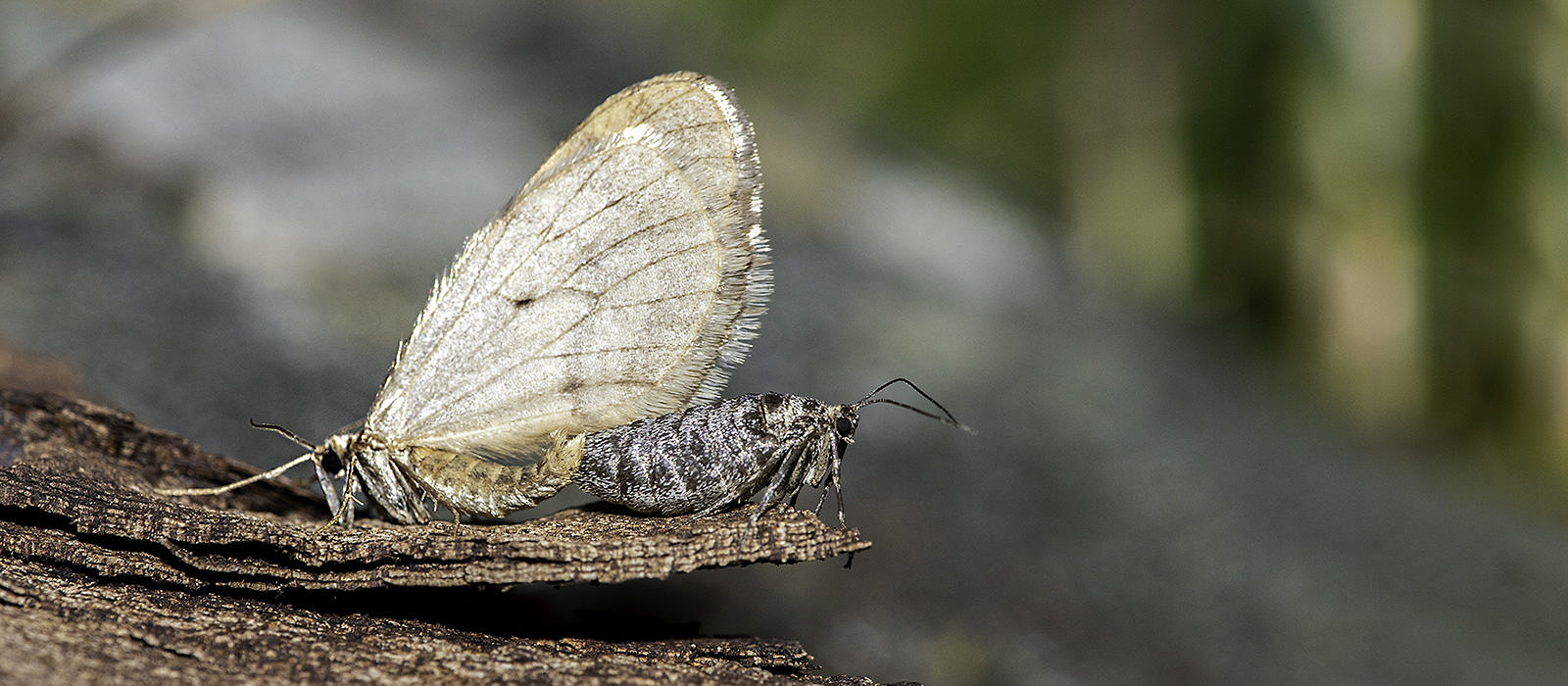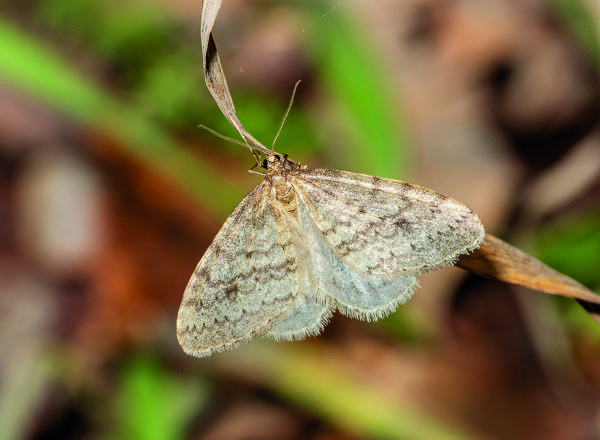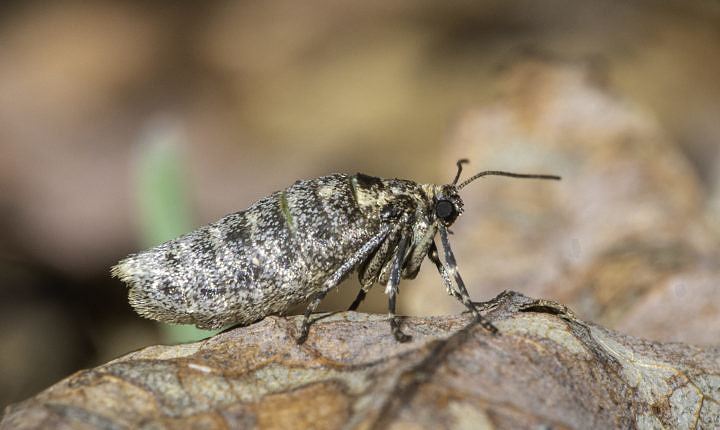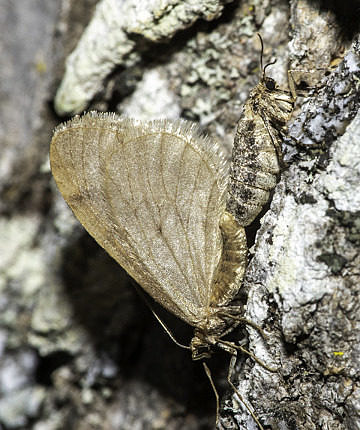
Sex and Light
Moth Procreation on the Shortest Day of the Year
Find more essays like this one at my new venue online, Chasing Nature.
On the shortest day of the year, when most of us turn toward the light, I seek out a creature of the dark: a moth.

A male Bruce Spanworm / © Bryan Pfeiffer
Relatively few other insects have reason to be flying around New England in winter. These animals need warmth to power their flight muscles.
But my winter moth is an iconoclast. The male is on the wing day or night in the cold. The female does not fly — an unusual forfeiture on her part.
As an entomologist, I’ll admit to going into a bit of a funk in winter. Not entirely from the shortage of light. Not even from the scarcity of insects: I can still find bizarre creatures crawling on six legs atop the snowpack. What I mostly miss is the raw diversity expressed in flight: free-spirit butterflies, fighter-jet dragonflies, work-ethic bumblebees.
A moth in flight in December is like civility in politics or going maskless in an indoor crowd — not impossible, certainly elusive, and mostly a fond memory to be sure. Fluttering in winter, a moth can embody joy in the moment and yet a kind of wistfulness — despite its unbecoming given name: Fall Cankerworm (Alsophila pometaria). (Farther north, but similar in form and function, a moth called Bruce Spanworm [Operophtera bruceata] flies mostly in November and is sometimes called “Hunter’s Moth.” That’s a pair of them in the banner image above.)
By any name, the male, marked like tweed, does not fly to please wistful entomologists like me. Nor does he find much nectar in the naked woods. He flies instead to find and mate with a female. A slender body and powerful muscles combine to lift him into flight when little else but snowflakes float in the winter woods.
The female does not fly to meet him. She has no wings. Flightlessness allows her to devote more of her intrinsic resources to producing eggs, lots of them, more than she might be able to haul around were she equipped to fly.
Mostly alone in the woods, often clinging to a tree trunk, she is plump with eggs, all but invisible to predators, to me, and to her airborne suitors. But the female needs no wings to attract a male in winter. She wafts chemical perfumes, pheromones, into the woods to signal the males. In so doing, she signals me as well.
A moth in flight in December is like civility in politics or going maskless in an indoor crowd…
I tend to locate females by watching for clusters of randy males converging and flapping at some spot in the woods. Or sometimes, when I spy a male resting on the trunk of an oak or a maple, he is already conjoined with a female in their winter coupling (image below).
Having attracted her mate for the nuptials, the female lays eggs in clusters around twigs. Soon after, she and the male die in the cold. In springtime their offspring hatch as “inchworm” caterpillars to feed and grow on fresh vegetation (sometimes in excess, to the point that they are viewed as pests). Then they pupate, transform, and eventually emerge as the adult moths of autumn and winter.
In the cycle and drama of life, females often bear a disproportionate share of the burden of reproduction. In this instance of evolution, a female moth has traded flight for fertility. Those males in flight are more noticeable to songbirds seeking an easy winter meal. So it goes for them in the struggle for existence.
As a hardened New Englander, I am under no illusion that insects mating in December are any early sign of spring — or even a parable for warmth and hope to come. They’re little brown moths going about their business.
Even so, beyond the coming light, my own observance of Dec. 21 also features a performance: Prosaic moths — one defying gravity, the other grounded for life — copulating in the cold on the shortest day of the year.
Walking with Moths
A short “indie film” of my encounter with winter moths during a 7-mile hike through woods to a meeting on 9 Nov 2010.



This is great Bryan and inspiring me to start that Insects in Winter class I signed up for. I especially liked your capsulized descriptions of the insects, i.e. ” free-spirit butterflies, fighter-jet dragonflies, work-ethic bumblebees.” You definitely have a way with words!
I don’t seem to be finding your notifications of your blog posts or replies in my email. Is it because it winds up under “Social” or “Promotions” in my gmail? (I don’t check them that often.)
Thanks, Kit. So nice to hear from you!
Thanks, Linda. Back atcha!
Thanks, Susan. Watch out for their relatives — non-native Operophtera bruceata, which goes by the common name Winter Moth.
Oh, my — thanks, Juan. So great to hear from you. We need to reconnect!
Ha! Thanks, Kate!
You are most welcome, Rebecca. Thanks for reading (and writing)!
Thanks, Sally. Nice to hear from you!
Thanks, Georgeanne. Which moths ate your blueberries? Any idea? Any images of the caterpillars for me?
Bryan, Thank you for sharing your evening walk in the woods with the moths! Can’t wait for Dec 21st next year!
A very Happy New Year to you!
“A moth in flight in December…” great line. Thanks for another wonderful article. Happy New Year, Bryan!
A wonderful article, well written. We have seen Bruce Spanworm moths for many years in western MA. Now we know much more about them. Thank you!
Bryan, I always enjoy your writings, thoughts and yes this video. Stay well and have a great Solstice.
Great article and the film made me want to grab my headlamp and head out. Only 9 hours til dark!
Happy solstice.
Thank you for a lovely story. I learned something new and an amazed and grateful.
I enjoyed this article very much!
Hi Bryan, loved your Solstice walk and the “credits” made me laugh. We always howl like wolves this night. Unfortunately, those dear little moths have eaten all my blueberry bushes, even though we sprayed with insecticidal oil. but thanks for the walk! Happy New Year and thanks for all the great thoughts and writings!
I’m in the little town of Packwood, WA, just south of Mt Rainier. Here we have a cousin to your moth, Operophtera occidentalis. I saw one just a couple of nights ago (Dec 19) and having been finding a few every night up until the last two nights when the cupboard was finally bare. Just a little change in the weather might bring some back out again. But there were still some mites and springtails out, plus a couple flies, with the temperature hovering around 33 degrees and an inch of snow.
Ah, this is a lovely early winter tale, Brian. And I didn’t know any of it.
Favorite scenery: black with a squiggle of white, and a splash of green! Cracked me up and then I came to the credits! Still laughing. How I miss walking in the woods with only starlight.
Thank you for moth-meanderings.
Happy Solstice, Bryan!